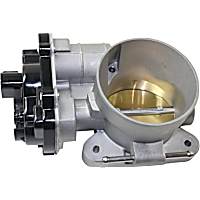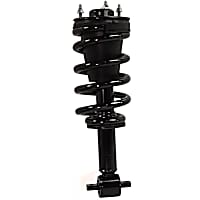Sport mode is one of the various driving modes available on many modern vehicles today. But what exactly does sport mode do and what can you expect when you switch to this mode while you drive?
What is Sport Mode and What Does It Do?
Sport mode fine-tunes a car’s throttle response, steering response, and shift points. In an automatic transmission, switching to this mode usually allows the transmission shift to happen later in the RPM range. This will enable the engine to maximize its power.
On most cars, this mode can be activated by pushing the sport mode button or selecting “Sport” in the dashboard menu.
Now, when should you use sport mode? This particular mode is best for when you want to push your vehicle to its limits and experience its full performance abilities. The setting sharpens throttle response, weighs down steering, and reduces suspension comfort, so it might not be best for your daily drives. However, it shines on the track and on long stretches of road.

What are the Benefits of Driving in Sport Mode?
Shifting to sport mode will give you a fun, exciting, and sporty driving experience.
Here are some of the other benefits of driving in sport mode:

Sharper Throttle Response
Sport mode opens the throttle faster, which makes your gas pedal feel more responsive. The sharper throttle response makes it possible for your car to achieve acceleration quicker than usual.
This is the exact opposite of eco mode, which makes the throttle open slower so that less air and fuel gets into the engine.
Changes in Shift Point
An automatic car adjusts and shifts at certain shift points automatically. It uses data from sensors to determine when it should shift gears.
Normally, the car is expected to shift to the most ideal point in order to maintain fuel efficiency and improve acceleration. On the other hand, a vehicle that’s in sport mode typically shifts at a higher RPM, sometimes all the way to the maximum engine speed.
This helps your car accelerate faster when you step on the gas pedal.
Sharper Handling
Expect sharper handling and less body roll once you shift your car to sport mode. On some vehicles, shifting to sport mode adjusts the dampening levels in their shock absorbers.
Usually, only high-end luxury and sports cars have adjustable shock absorbers. However, some economy cars also have them.

Tightened Steering
Most modern vehicles come equipped with electric power steering instead of a hydraulic pump. This makes your “steering feel” change a lot quicker than usual when you’re driving.
Pressing the sport button adds more resistance to the steering. Sport mode also makes steering feel more responsive, allowing you to drive safely through sharp turns while maintaining full control of your vehicle. You’ll also notice that the suspension will feel stiffer and steering will become firmer or heavier to hint at that extra power now in your hands.
On some high-end vehicles, sport mode offers a sportier and weighted feeling that’s similar to the race car driving experience.
What are the Downsides of Sport Mode?
Just like all the other driving modes, sport mode also has some disadvantages.
Increased Fuel Consumption
Does sport mode use more gas? Yes. Enhanced engine performance equates to increased fuel consumption. Expect your car miles-to-gallon rating to change when you switch to sport mode, although the difference may not be significant if you only drive in this mode for short periods of time.
Engine Health
Although sport mode can make you feel like a race car driver, it’s not advisable to drive your car like one. Hard acceleration puts significant strain on your drivetrain components and burns a lot of fuel. Also, driving at full-throttle all the time may cause you to do full-force stops frequently, putting additional strain strain on your brake pads and rotors.
You should always drive your car responsibly while in sport mode. If you drive like a maniac every time you press the sport mode button, you could be putting additional strain on the engine and other parts of your car.

Bumpier Ride (On Rough Terrain)
It’s best not to try sport mode while driving on bad roads. Changes in your vehicle’s settings (suspension and steering) may make it more difficult to drive through bumpy roads and rough terrain.
A vehicle that is on sport mode normally has stiffer suspension to make it more stable and keep it planted to the ground. This promotes better handling, especially during high speeds.
However, this also results in a bumpier ride.
What Does Sport+ Mode Do?
Some vehicles also have a sport+ mode, which is also known as track mode. This is a more extreme version of the original sport mode. Sport+ mode tightens the front seat side bolsters to keep you in your seat. Active exhaust also opens up to let out more of the engine’s roar as you speed down the road. Finally, all traction-related systems are switched off in this mode, preventing the vehicle from cutting power as the vehicle goes sideways. In some vehicles, the suspension might stiffen so much in sport+ mode that traction control isn’t as effective.
Sport+ mode isn’t for the road and is only safe to use on the track and other safe areas. Typically, only full sports cars have this mode so they can achieve higher performance levels.
Do All Cars Have The Same Sport Mode Setting?
No. The sport mode in your vehicle may not offer the same experience as the sport mode on another car.
Your sport mode experience will greatly depend on your vehicle’s year, make, and model. On some vehicles, the changes to your vehicle when in sport mode may not be noticeable at all.
The best way to find out how this mode affects your car is to activate it. Press the sport mode button and observe how your driving experience changes.
Just remember to keep your eyes on the road, drive responsibly, and be safe!
Products Mentioned in this Guide
Any information provided on this Website is for informational purposes only and is not intended to replace consultation with a professional mechanic. The accuracy and timeliness of the information may change from the time of publication.

 Throttle Body
Throttle Body
 Shock Absorber and Strut Assembly
Shock Absorber and Strut Assembly














